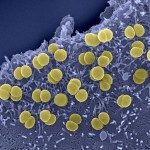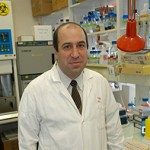Link to Pubmed [PMID] – 16941360
Clin. Infect. Dis. 2006 Oct;43(7):817-22
BACKGROUND: During the period 2001-2002, Burkina Faso reported its first meningitis epidemic due to Neisseria meningitidis (Nm) serogroup W135, prompting concerns that this serogroup would persist as a cause of epidemic disease.
METHODS: During the period 2002-2005, hospital- and population-based surveillances were conducted in 3 districts in Burkina Faso. Etiology was determined by culture, polymerase chain reaction (PCR), and latex agglutination. Reference laboratories determined phenotype and genotype.
RESULTS: Of 2004 subjects who received a lumbar puncture, 265 were identified as having Nm, including 93 who had Nm serogroup A (NmA) and 146 who had Nm serogroup W135 (NmW135). Over the study period, the proportion of cases due to NmW135 decreased by >75%, primarily because of decreased occurrence among young children and in a single district. During peak epidemic months, the annualized incidence of NmW135 decreased from 146 cases to <1 case per 100,000 population. All but 2 NmW135 isolates were phenotype W135:2a:P1.5,2 (sequence type [ST]-11 clonal complex). All NmA isolates were phenotype A:4:P1-9 (ST-2859 of the ST-5 clonal complex). We identified 1 isolate from serogroup Y (ST-11 clonal complex), 1 isolate from serogroup X that was similar to strains previously associated with epidemic disease, and 1 isolate from serogroup W135 of the newly described ST-4375 complex.
CONCLUSIONS: For unknown reasons, serogroup W135 achieved epidemic status, primarily among young children, and then largely disappeared over a short time period. The continued circulation of multiple strains with epidemic potential emphasizes the need for ongoing surveillance and the potential benefit of vaccines that are protective across serogroups.



